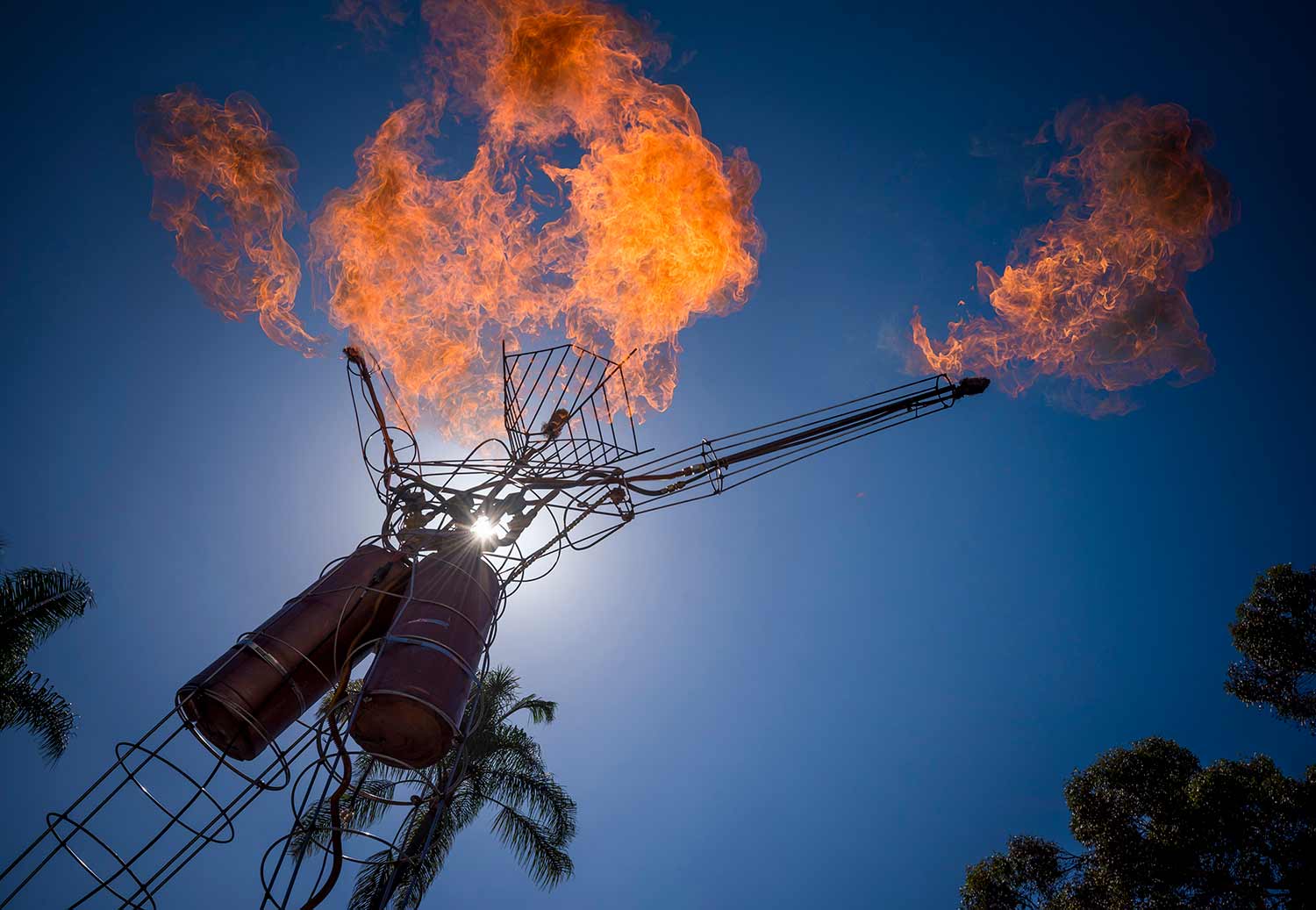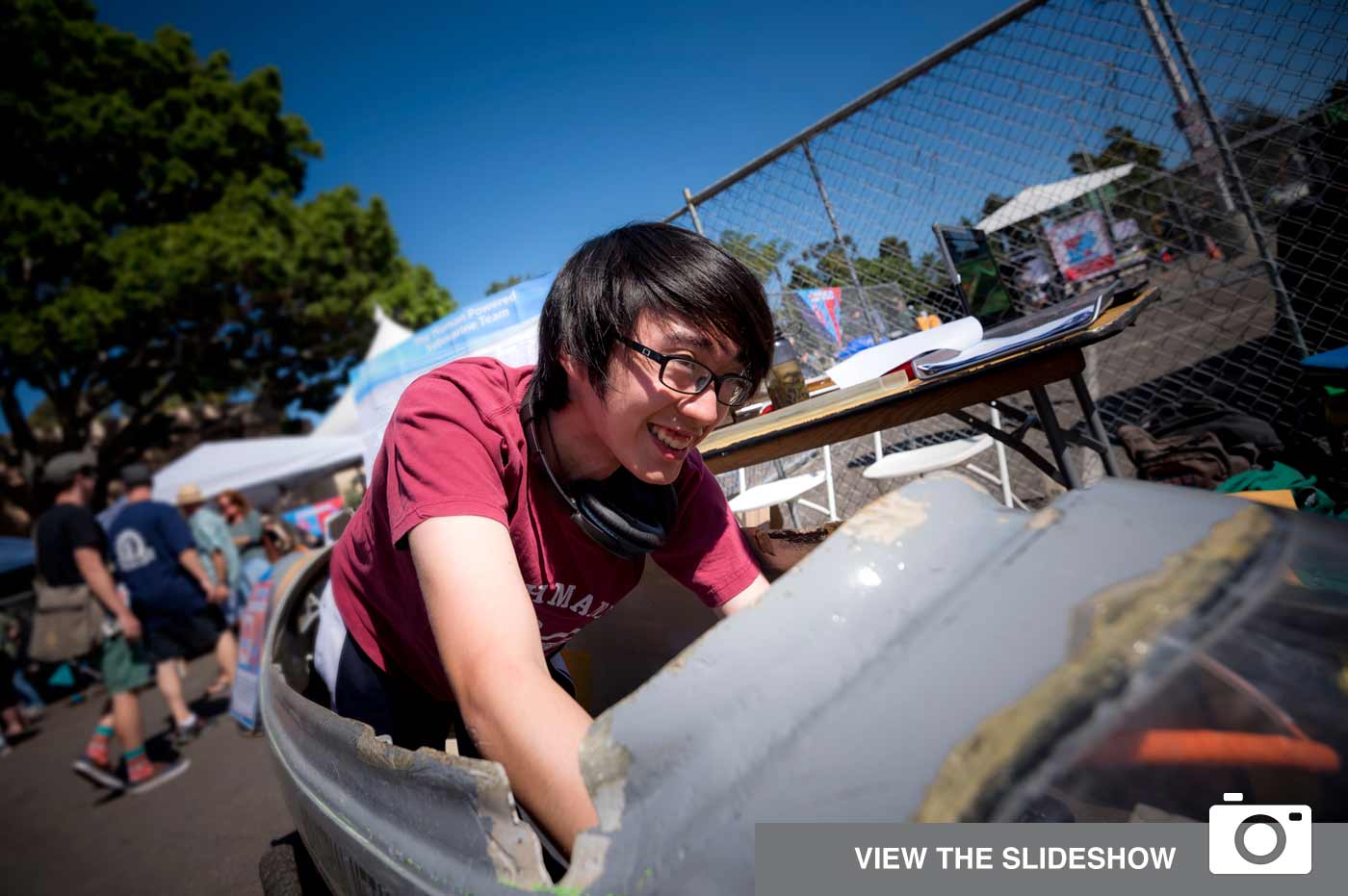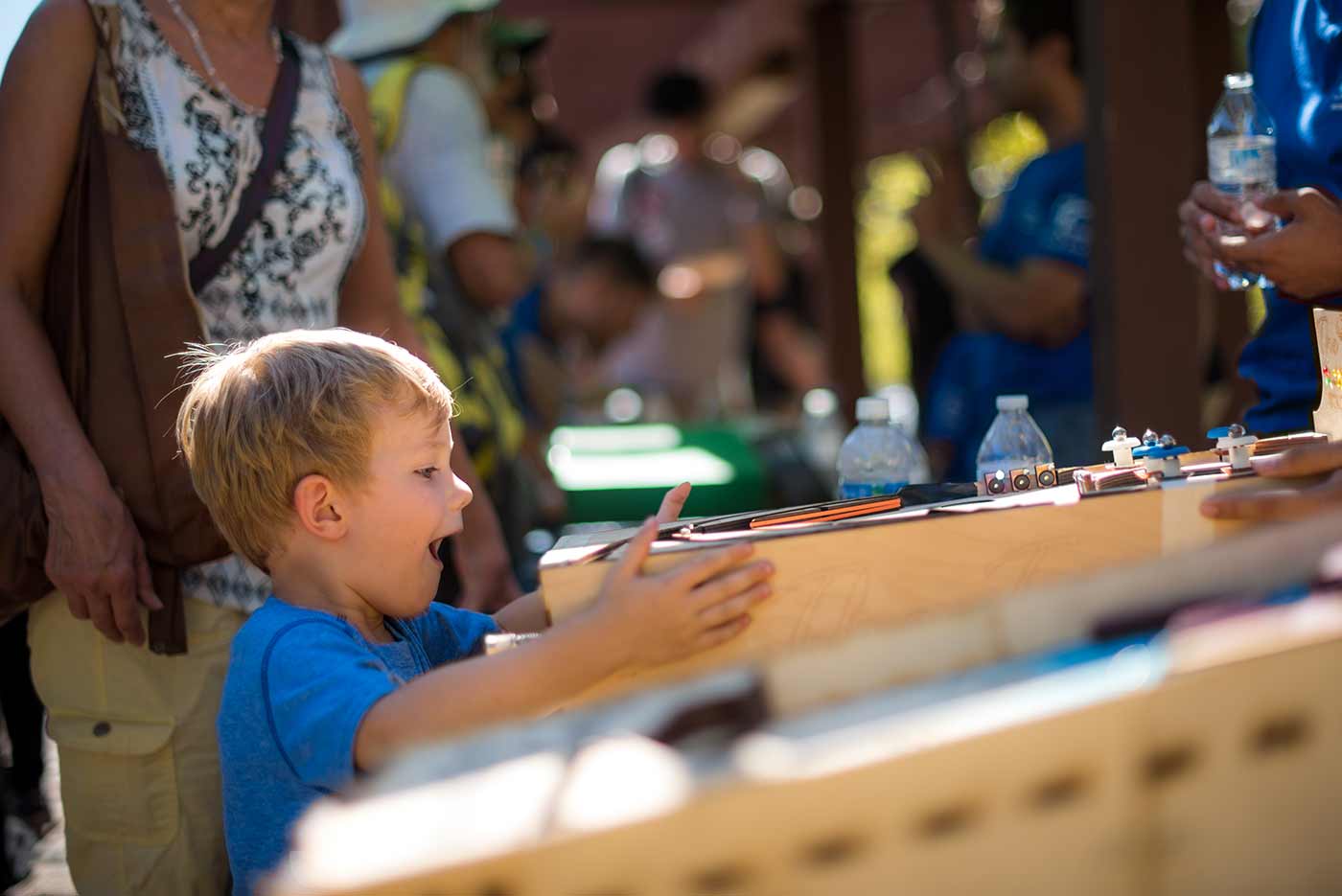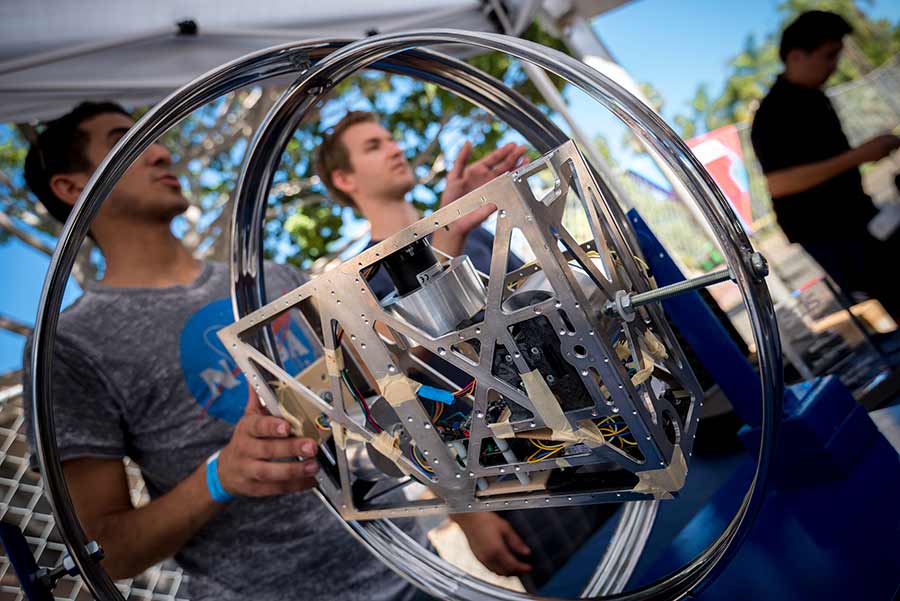Acting Student and Bioengineering Alumna Awarded Soros Fellowship for New Americans
Awards & Accolades
By:
Published Date
By:
Share This:

Photos by Erik Jepsen and Lily Tang/UC San Diego Publications
A surfboard made of algae-based foam. A small satellite that could be put into orbit around the moon. A balloon that carries experiments to the outer reaches of the atmosphere. These were some of the innovations that students, faculty and alumni from UC San Diego showed off this weekend at San Diego Maker Faire, a gathering of more than 200 innovators in a festival-like atmosphere at Balboa Park.
The UC San Diego exhibits showcased the campus’ impact on the region and beyond, through research, education, outreach, startups and partnerships with industry. They included booths manned by students, faculty and alumni at the Jacobs School of Engineering, the Division of Biological Sciences and many student organizations scattered throughout the park.

“We want to show the value of the university to the community,” said Robert “Skip” Pomeroy, a professor of chemistry and biochemistry at UC San Diego, whose team displayed a surfboard made from algae-based foam. “We are a $2 billion venture. This is an opportunity to show that the science we’re working on has real world applications.”
For students, the event also is an opportunity to work outside the classroom and the lab and interact with the public. In the Japanese Friendship Garden, students in the Department of Electrical and Computer Engineering showed off a video game where muscle movements replaced a joystick; robots built and programed to follow a line; pinball machines constructed from scratch--without plans; and more. The activities were designed to spotlight new hands-on, experiential engineering classes offered in the department in partnership with EnVision Maker Studio. It’s all part of an initiative to ensure that all Jacobs School students get at least one hands-on class every year from their freshman year to graduation.
“We want to share with fellow makers what we are doing,” said Karcher Morris, a Ph.D. student at the Jacobs School who helped coordinate the day’s activities.
The hands-on classes help students connect the information they learn to concrete applications, said Camille Lee, a fourth-year electrical engineering student who served as a teaching assistant for ECE 5, “Making Breaking and Hacking Stuff.”

Meanwhile, in front of the Air and Space Museum, the Division of Biological Sciences was demonstrating how research can be spun off into a business. The project began last year at UC San Diego when undergraduate biology students working in the laboratory of Professor Stephen Mayfield to produce biofuels from algae joined forces with undergraduate chemistry students to solve a basic chemistry problem: how to make out of algae oil the precursor of the polyurethane foam core of a surfboard. Polyurethane surfboards today are made exclusively from petroleum.
The algae-based surfboards currently are only available for professional surfers, but they should be released more widely around Christmas time, said chemist Pomeroy. On Saturday, many visitors asked if the foam was biodegradable, said master's student Marissa Tessman. The answer is yes, within 10 to 20 years. Some also wanted to know if it was fireproof. This puzzled Tessman. Pomeroy pointed out the foam could be used as isolation in a home with the addition of fire retardant, among other applications.
Nearby, computer scientist Steven Swanson and his students showcased the Gadgetron Robot Factory, an online tool that allows its users to build and program a robot with minimum effort. Users decide what they want the robot to do and how they want it to look. Gadgetron does the rest, selecting electronic components to use and generating a blueprint for assembly. Many visitors to the Gadgetron booth wanted to know how they could use it in the real world and Swanson and his students were happy to point them to their website.
“We make it easier for people at all skill levels to build and design robots,” Swanson said. “We are really interested in getting feedback from the community.”

Maker Faire also gave many student groups the opportunity to showcase their work. Perhaps one of the most remarkable is the 3D printed rocket engine developed by the UC San Diego chapter of Students for the Exploration and Development of Space, or SEDS. The organization was the first student group to launch a rocket powered by a 3D printed engine.
One of organization’s next efforts was on display nearby: a mini-satellite, called a CubeSat, which would orbit the moon. Students 3-D printed their own thrusters to help the satellite maneuver and slow down. The UC San Diego effort is currently ranked third in a NASA contest to launch the satellites in 2018. This weekend, most visitors wanted to know what kind of science experiments the satellite would carry. “We’re going to take pictures and map the surface,” said Ryan Collins, who led the effort to build a prototype to test the satellite’s controls. The CubeSat would also carry other experiments provided by NASA, which are yet to be determined. Visitors also wanted to know if the SEDS students were Ph.D.s. They’re all undergraduates.
The UC San Diego Near-Space Balloon team fielded questions about what kind of payload they carried up to 40,000 feet. In the past, some cockroaches hitched a ride on one of the balloons to see how they would fare in space. But most recently, one of the balloons transported phytoplankton to see how it would grow at high altitude and extremely low temperatures. The research was a collaboration with the Scripps Institution of Oceanography at UC San Diego.
UC San Diego computer science alumnus Stephen Foster also gave a talk about virtual reality. Foster is the CEO and cofounder of ThoughtSTEM, a San Diego-based company that aims to teach children how to code by playing computer games, including Minecraft.
Other UC San Diego groups showcasing their work at Maker Faire included the research group of roboticist Michael Tolley, an expert in foldable robots and soft robotics; Engineers For Exploration, which provides high tech tools for archeology and conservation; the Triton solar-powered car; and the human-powered submarine team, which will compete against other universities around the world in June 2017 in Maryland.
Share This:
Keep up with all the latest from UC San Diego. Subscribe to the newsletter today.